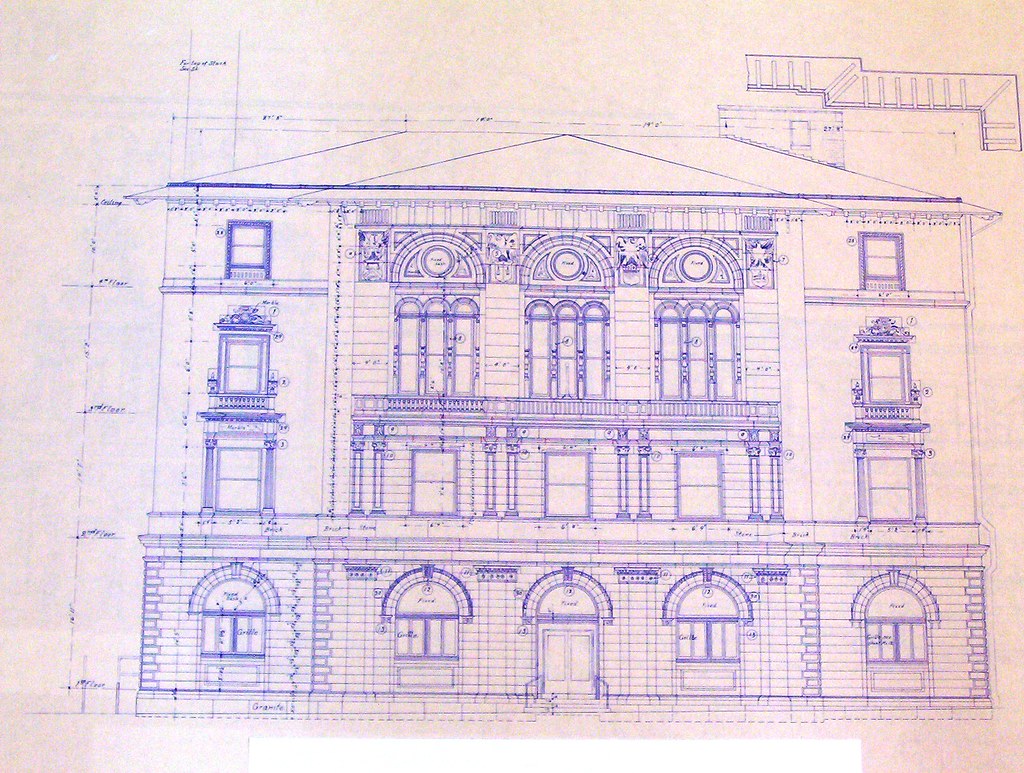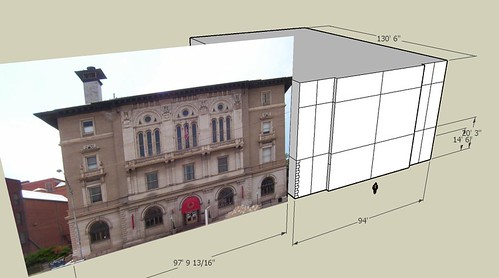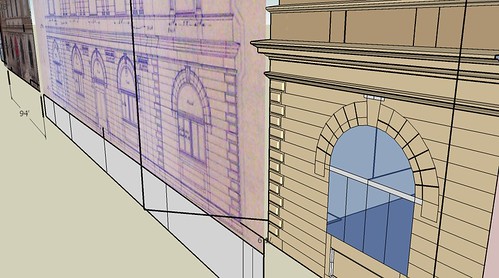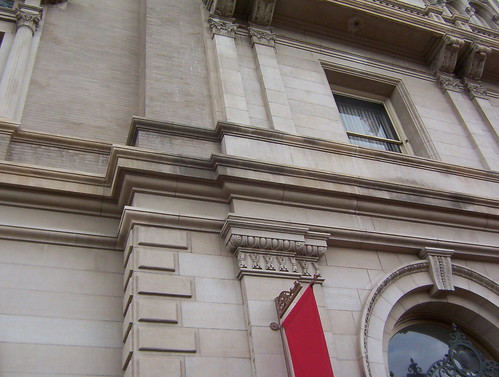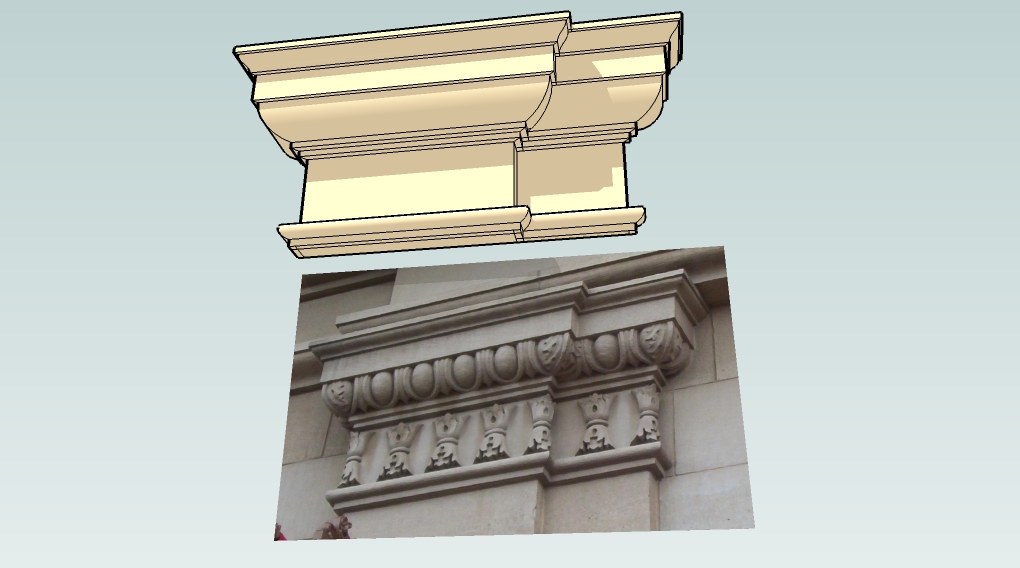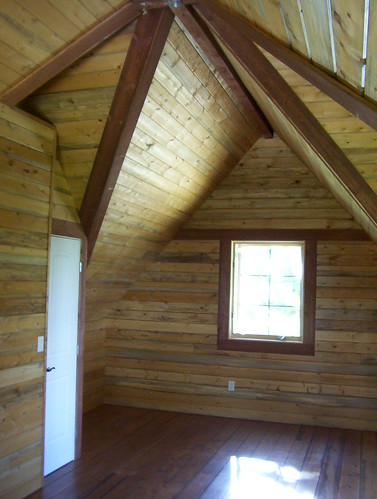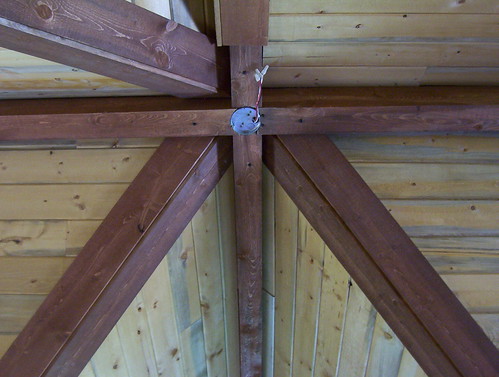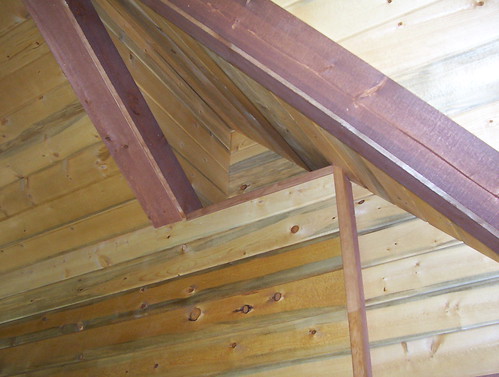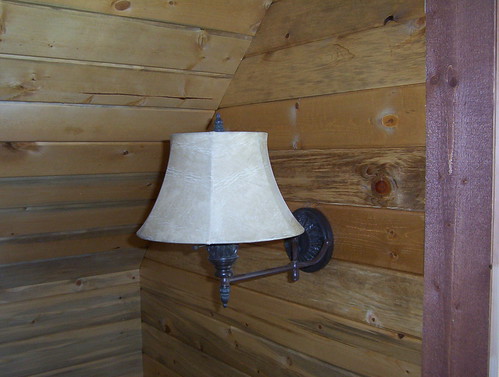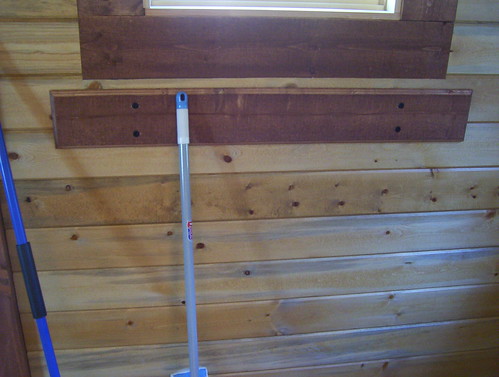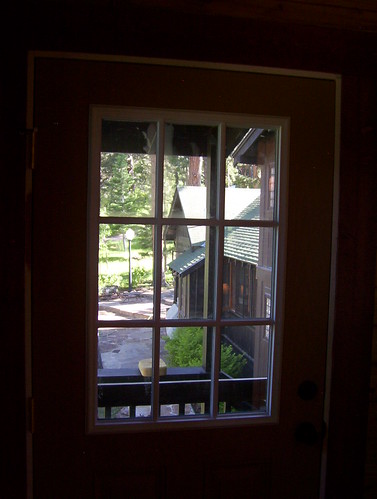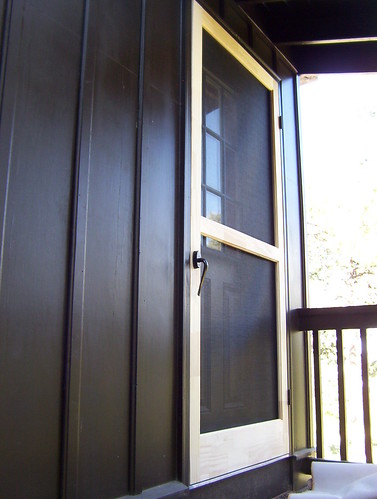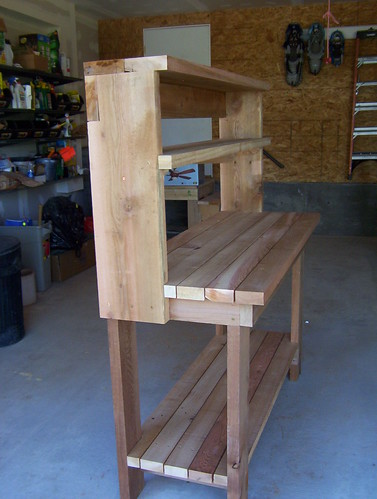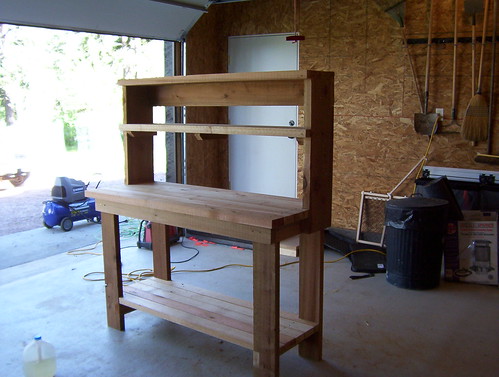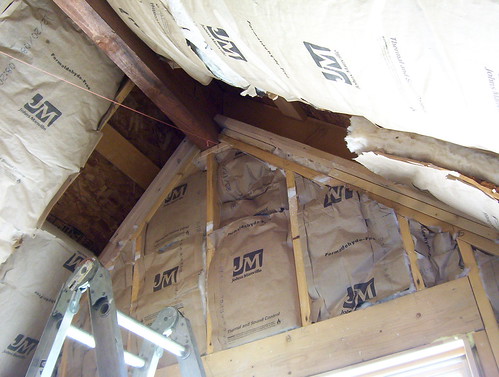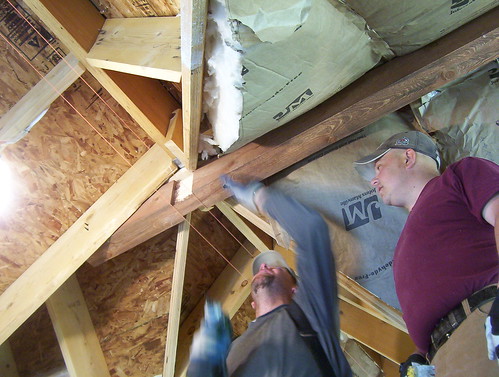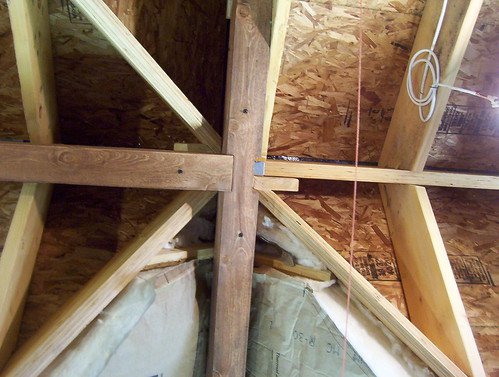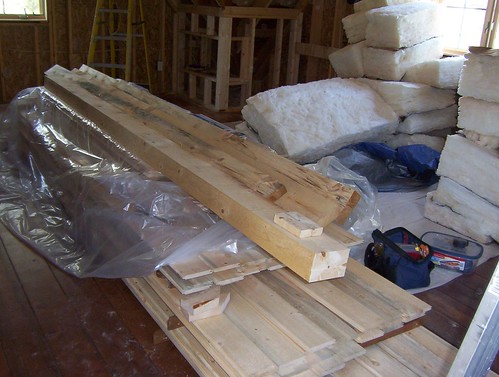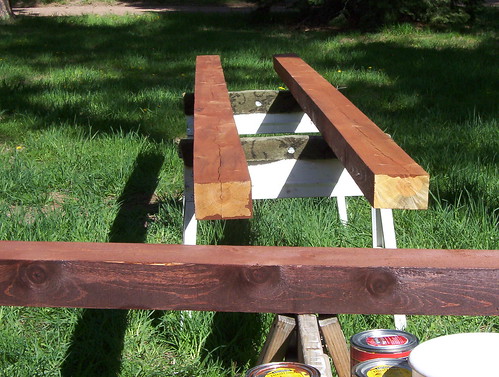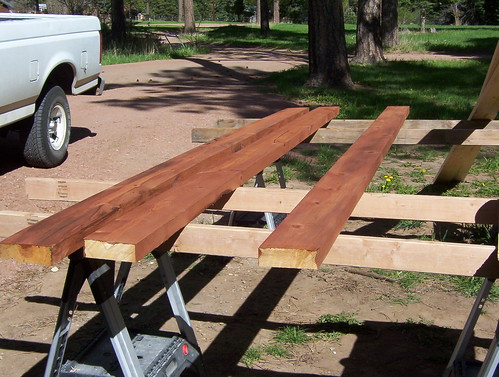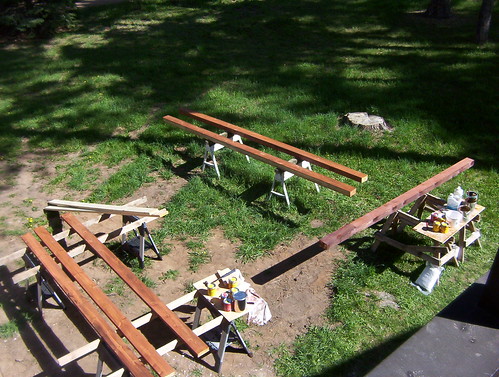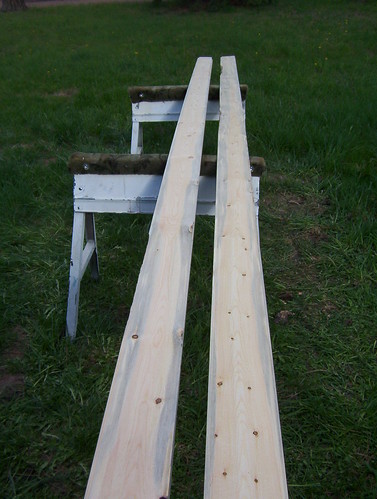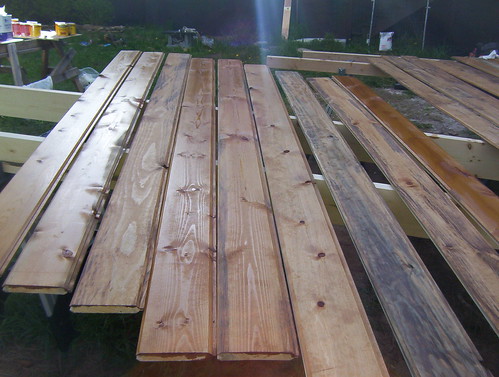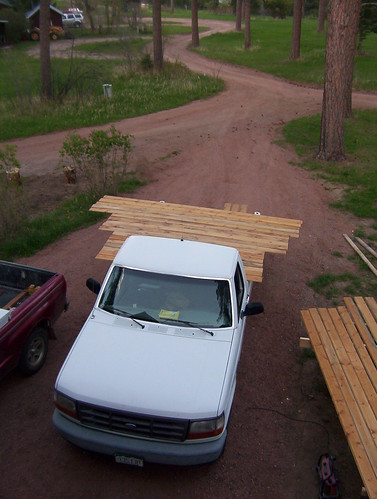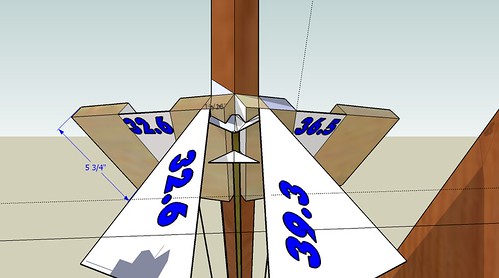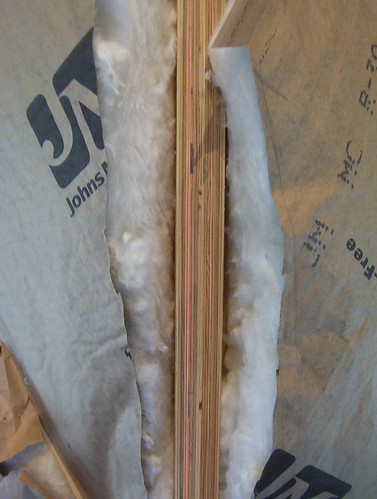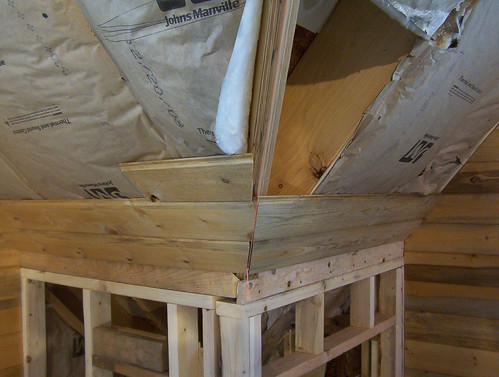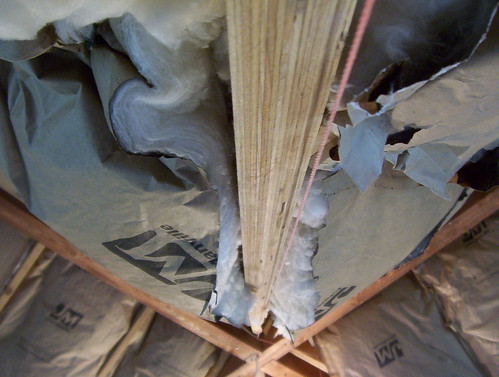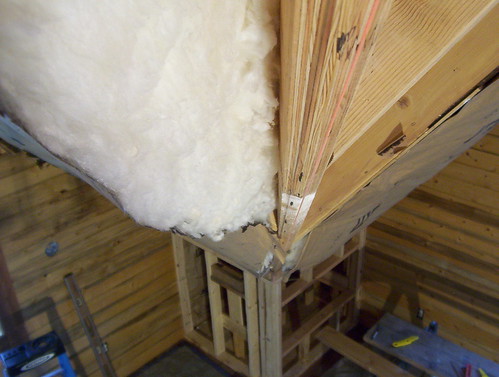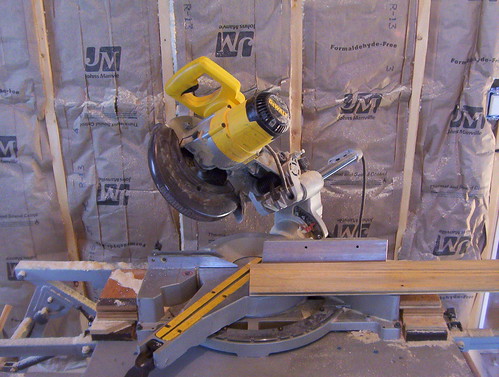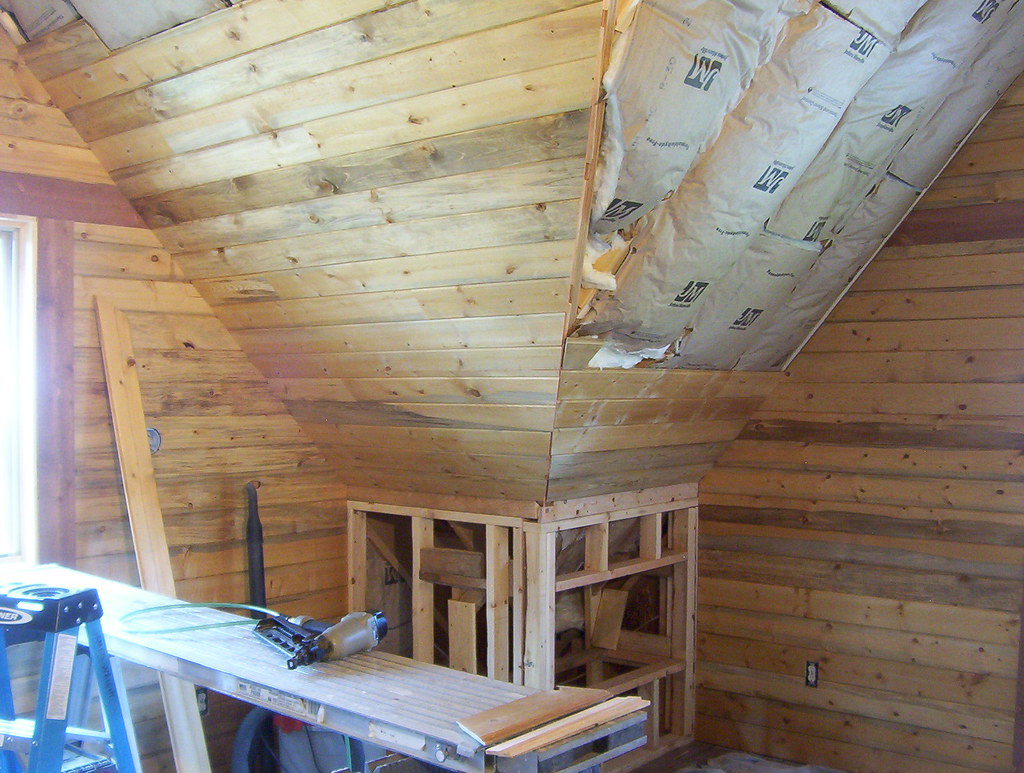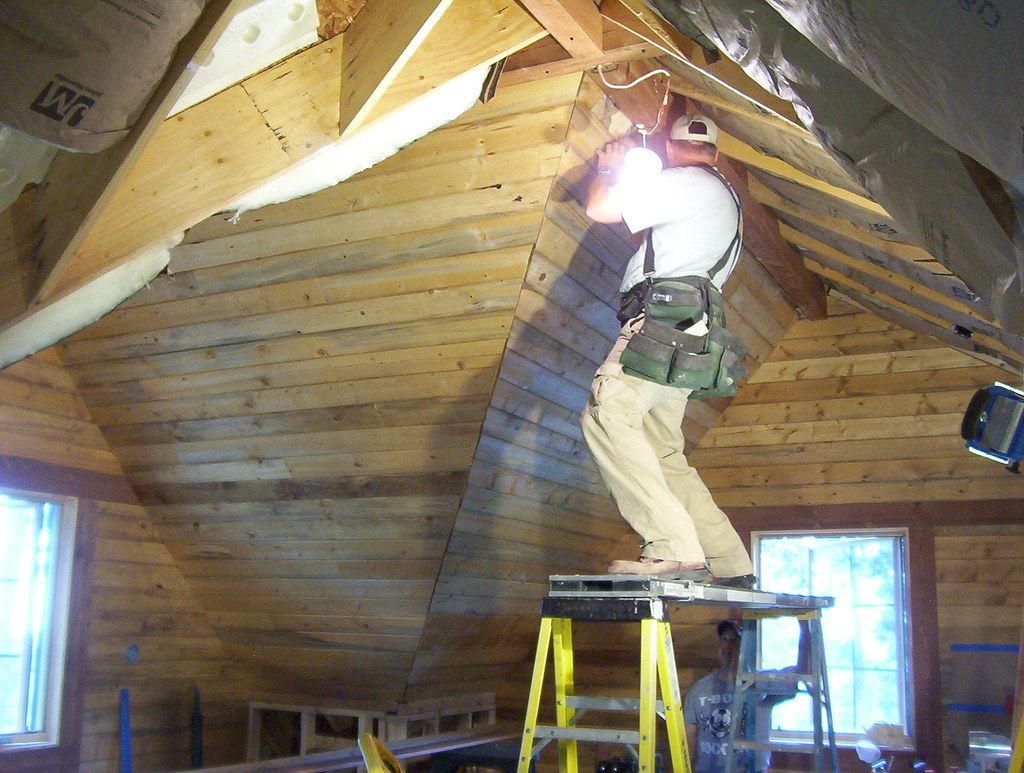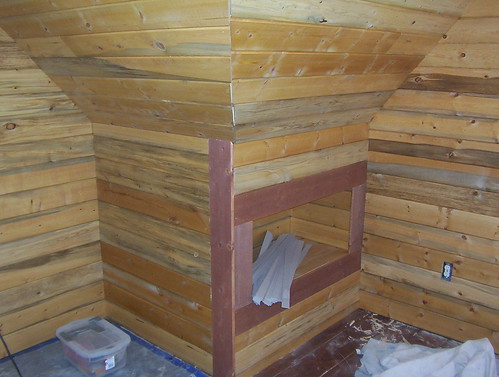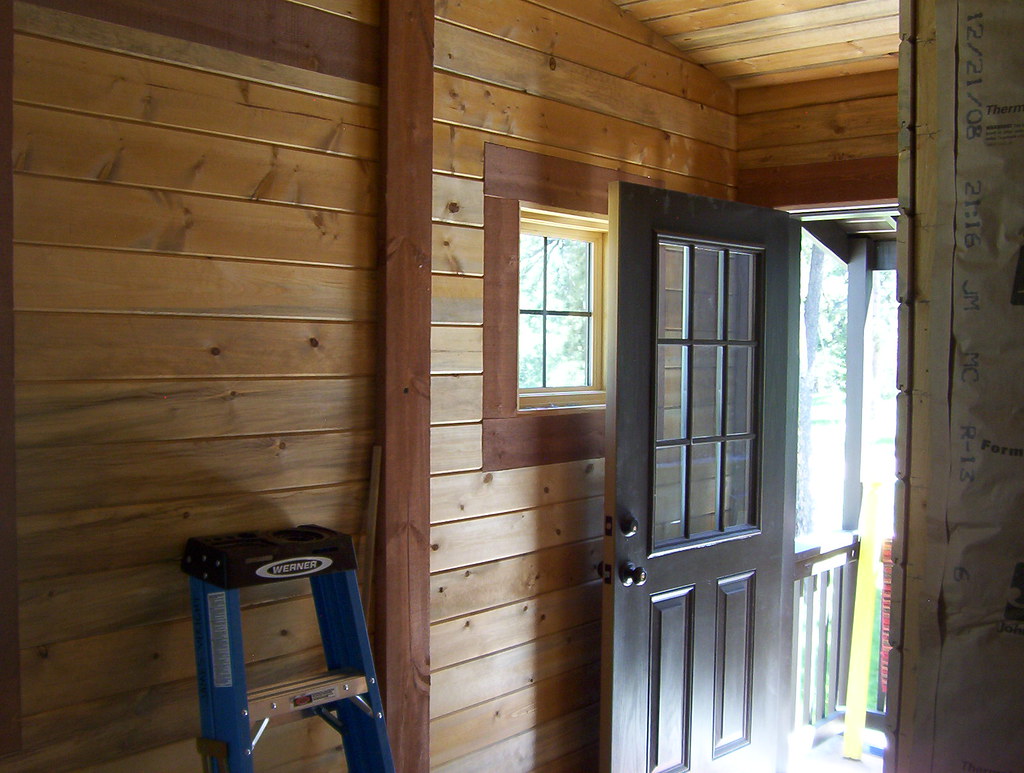
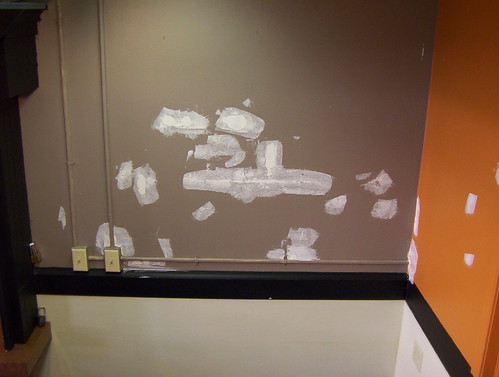
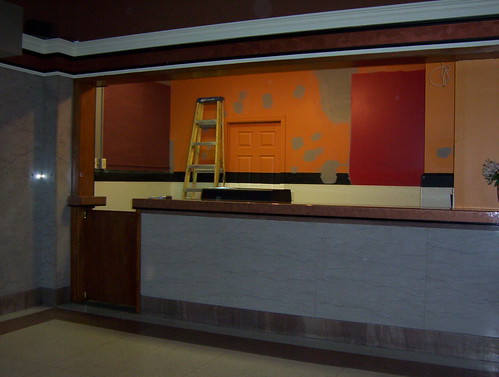
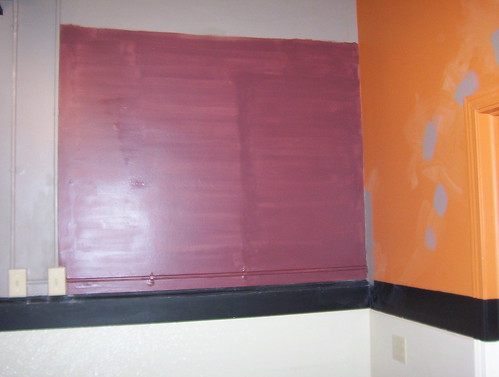

Previously it had been painted orange. There was paper damage to the sheet rock where something had been pulled down. It had double-sided stick adhesive tabs that would not let go. So I floated that over with broad knife, setting mix and primed it. The result looked like some kind of confused Robert Motherwell painting. A dark red of the owner's choosing was put up as a sample. I also put up a sample that was a dark cherry for comparison and contrast.
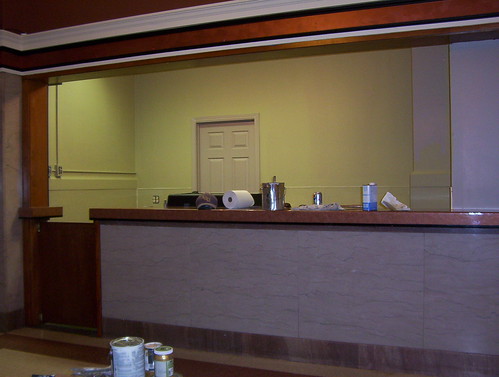
I primed over all those when a dark metallic green was chosen out of Ralph Lauren's paint. (There is an accent of Modern Masters copper metallic done in a band above with random brush strokes.)

After the first coat.
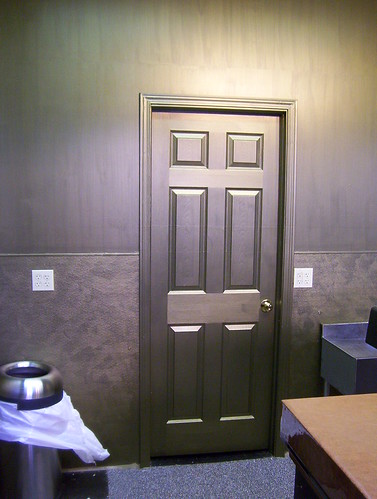
Then I brushed the door and randomized the FRP panel that ran up to the chair rail.
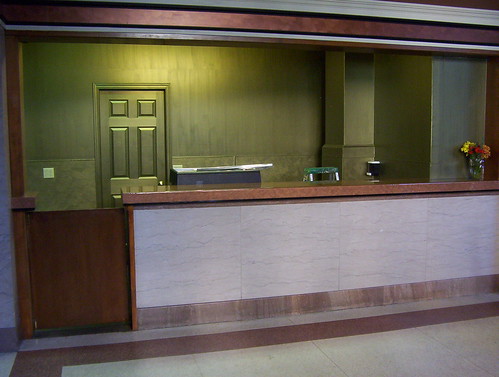
To effect a sort of delineation I tried a trick with some Frog-tape at a line parallel to the bottom of the header above the bar at 7'6" high. The owner wanted the texture to be single brush strokes and I couldn't figure how else I would straighten it up, sophisticate it (or even accomplish that) for a wall that ran up nine more feet above the chair rail. I brushed up to that, over-lapping the tape. Then taped to the bottom edge after that dried. Then I removed the top tape, and brushed down overlapping the new tape with the help of two ladders and a plank at about five feet high.

I randomized the magazine rack, perhaps getting a little too strict with the linearity. Everything else was curviliniar. I think it breaks things up though.

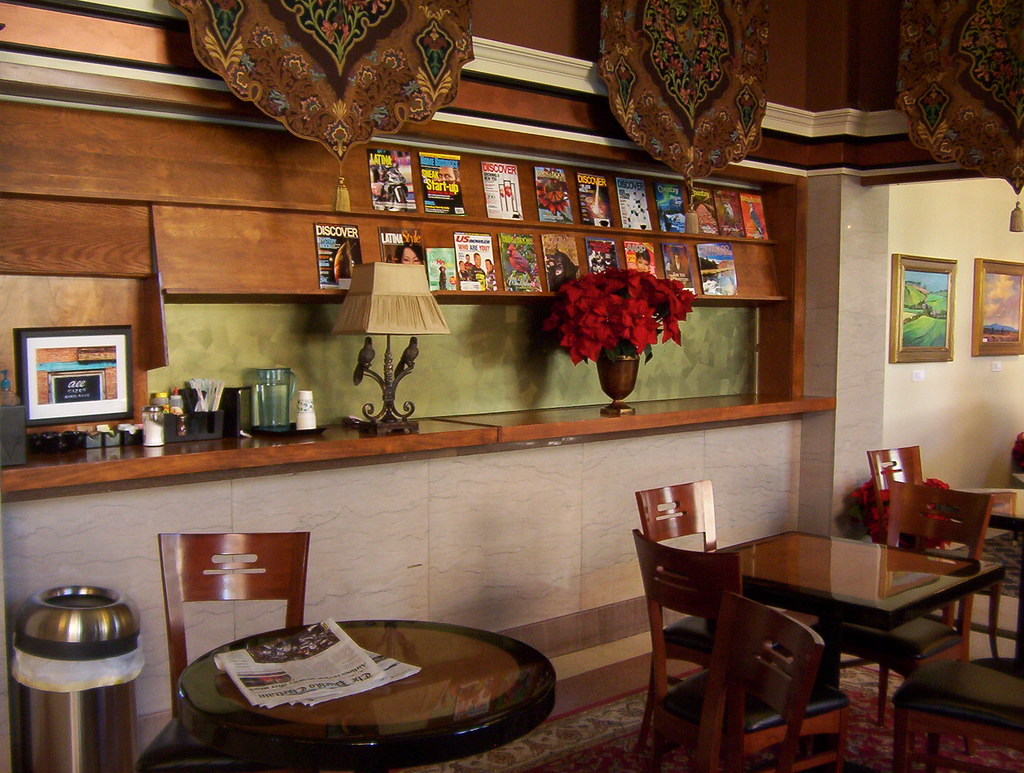
After the owner, Todd Pasquin, put up decorative tapestries and the new tenants, Jacob and Cecilia moved in.
I took some additional photos of the Fifth Street Gallery that Starworth Properties leases out. It is my hope that I can assist in promoting it's increased use, and possibly expanding it in the future.

The additional treat of a baby grand piano at present.
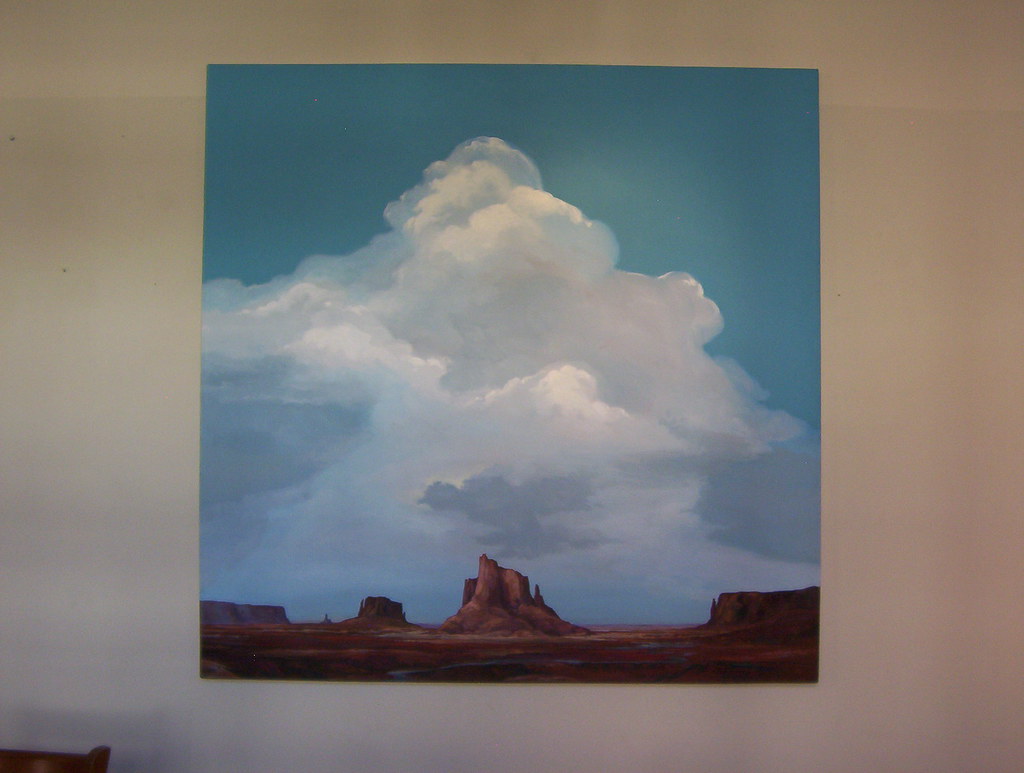
A painting by one of the artists whom keeps a studio on the second floor, Robert Wands.
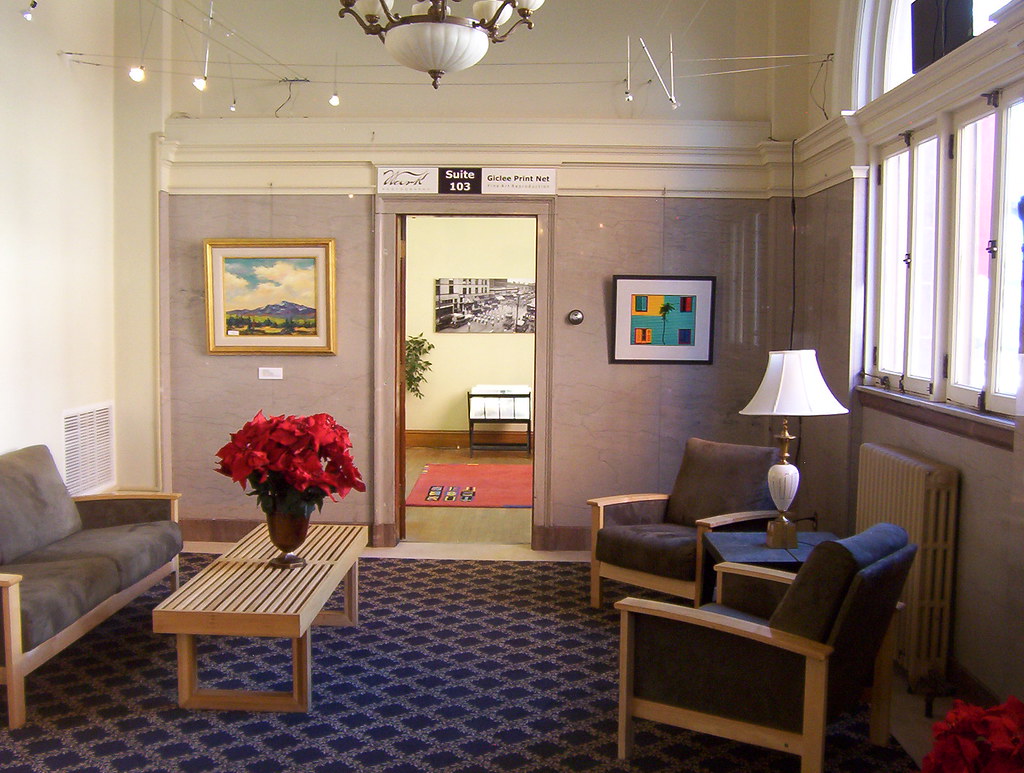
The marble-cased end wall to the old post office, and the entrance to John Wark's Giclee print shop. He leases the giant sorting room on the main floor in the "new" part of the building built during the 1930's, and turns a healthy business here reproducing all manner of two-dimensional artworks and photography.
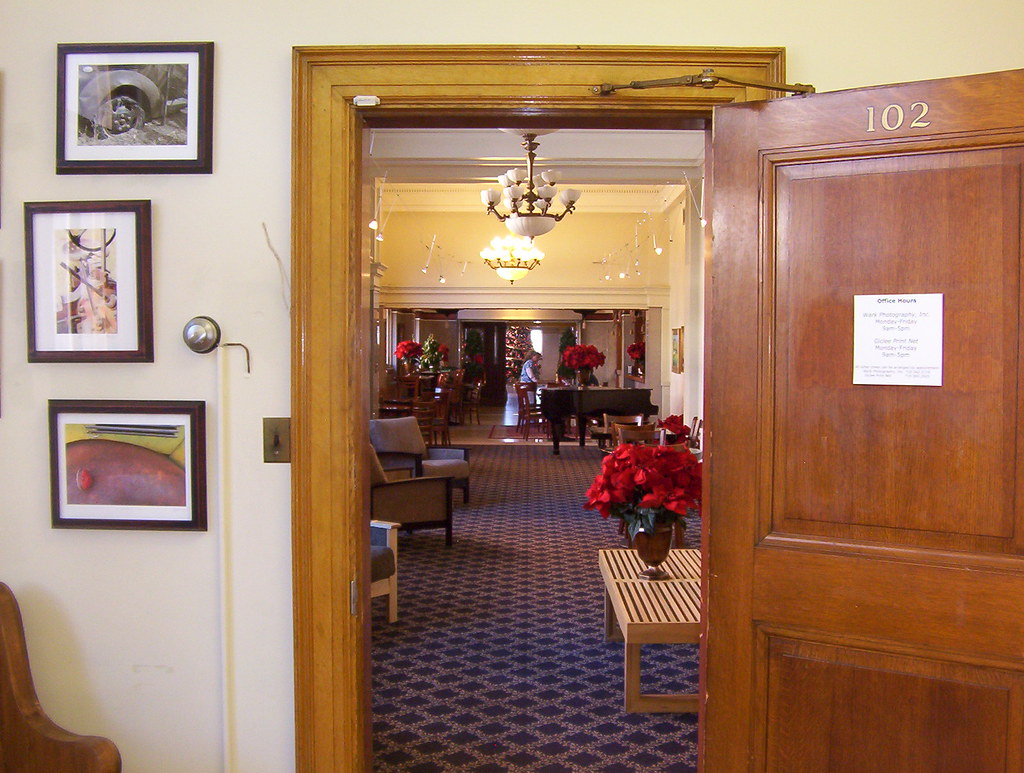
The long look back through that same door. You can just make out the tall Christmas tree in the east part of the lobby. It's quite a wonderful space kept with loving care by the owner.




